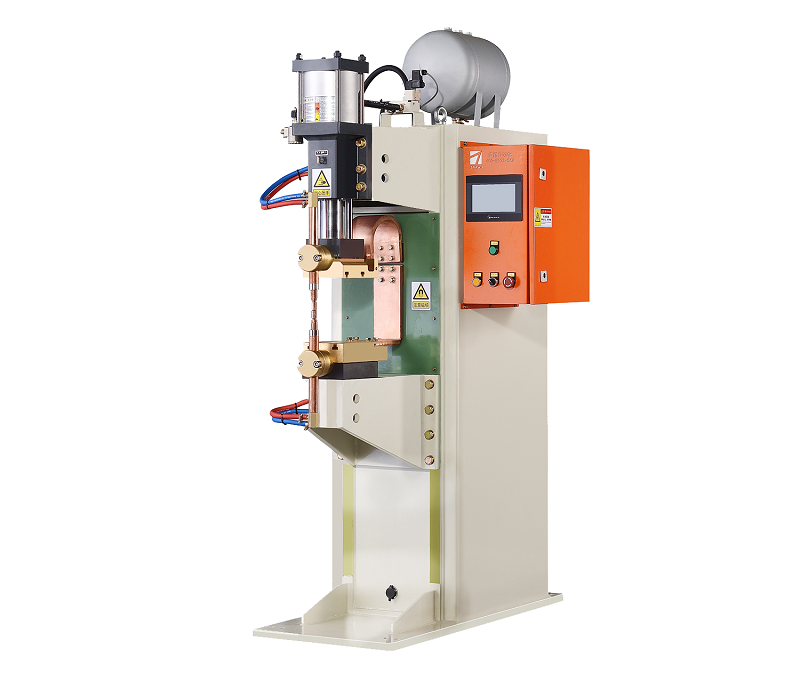Welding Copper Alloys with Medium Frequency Inverter Spot Welding?
Copper alloys are widely used in various industries due to their excellent electrical conductivity, thermal conductivity, and corrosion resistance. This article focuses on the techniques for welding copper alloys using a medium frequency inverter spot welding machine. Understanding the specific considerations and procedures for welding copper alloys is crucial for achieving successful and reliable welds in copper alloy applications.

Material Selection:
Choose the appropriate copper alloy for the intended application. Copper alloys exhibit different mechanical properties and weldability characteristics, so it is important to select an alloy that meets the desired requirements. Common copper alloys used in welding applications include brass, bronze, and copper-nickel alloys.
Joint Design:
Select a suitable joint design that ensures proper fit-up and alignment of the copper alloy components. The joint design should provide sufficient access for electrode placement and facilitate effective heat distribution during welding. Common joint types for copper alloys include lap joints, butt joints, and T-joints.
Electrode Selection:
Choose electrodes made from materials compatible with copper alloys. Tungsten copper electrodes are commonly used due to their high heat resistance and excellent electrical conductivity. Select the electrode size and shape based on the specific joint design and welding requirements.
Welding Parameters:
Control the welding parameters to achieve optimal results when welding copper alloys. Parameters such as welding current, time, electrode force, and cooling time should be adjusted based on the specific copper alloy being welded. Conduct trial welds to determine the appropriate parameters that provide good fusion and penetration without excessive heat input.
Shielding Gas:
Use an appropriate shielding gas during the welding process to protect the molten weld pool and electrode from atmospheric contamination. Inert gases such as argon or helium are commonly used as shielding gases for copper alloys. Ensure proper gas coverage to prevent oxidation and achieve clean and sound welds.
Pre-weld and Post-weld Heating:
Pre-weld and post-weld heating may be necessary for certain copper alloys to control the thermal cycle and minimize distortion. Preheating the joint can help reduce the risk of cracking, while post-weld heating can relieve residual stresses and improve the overall weld quality. Follow the recommended heating procedures for the specific copper alloy being welded.
Post-Weld Cleaning and Finishing:
After welding, remove any flux residues, oxides, or contaminants from the weld area using appropriate cleaning methods. This ensures the integrity and aesthetic appearance of the welded joint. Finishing processes such as grinding or polishing can be employed to achieve the desired surface smoothness and appearance.
Welding copper alloys with a medium frequency inverter spot welding machine requires careful consideration of material selection, joint design, electrode selection, welding parameters, shielding gas usage, and pre- and post-weld heating procedures. By following these techniques, welders can achieve reliable and high-quality welds in copper alloy applications. Proper welding practices contribute to the structural integrity, electrical conductivity, and corrosion resistance of the welded components, ensuring their functionality and longevity in various industries.